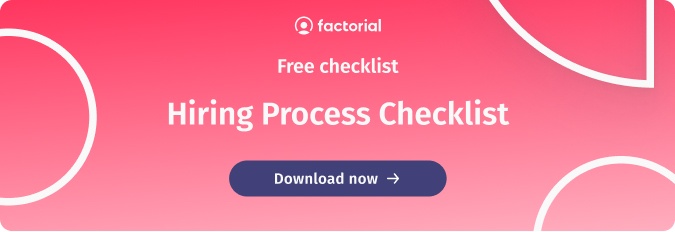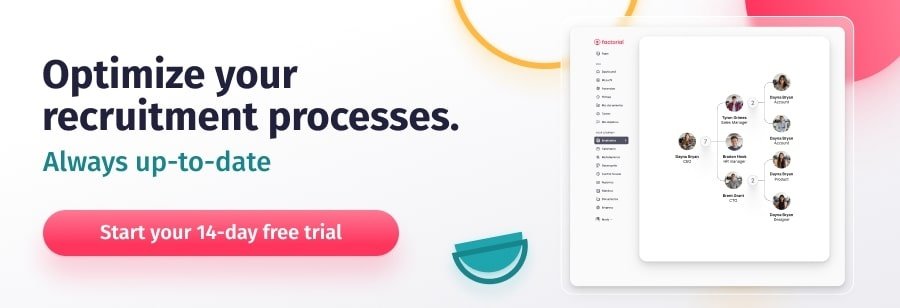One of the main concerns for an HR manager today is recruitment. Coming up with the most creative recruitment strategies isn’t always easy, but it is an essential piece to creating a successful recruitment strategy that will help you find the right individuals to join your dream team. Once you’ve found your elite crew, you need to actively provide daily support by setting them up with the tools for success. Bringing them together for regular team building activities is one way to strengthen the bonds between them, but is this enough?
What if we told you there was a secret sauce, that will change the way you think about recruitment and how you manage your teams?
As an HR manager, you’re likely bogged down with many tasks that require the majority of your attention, leaving you with little energy to focus on what really matters, your employees. They are, after all, a massive key to whether you succeed or not, and finding time to invest more into them is key. So, how do you free up more time so you can pay attention to nurturing your team? For starters, if you haven’t already automated your HR processes, now is the time. It’s 2020, and excel spreadsheets, although functional, are time-consuming to fill out and outdated.
- Uplevel your Recruitment Strategy
- The Potential of Human Design: The Basics
- What are the design types?
- Retain your top talent
Uplevel your Recruitment Strategies
I’m sure you’re wondering what the secret sauce in recruitment and retention is that we mentioned at the beginning…well, here it is!
If you’re looking for new types of recruiting tools to provide better insights into your potential candidates or feel that finding the right employees that stick is a challenge, it’s time to add Human Design insights to your recruitment strategy. Moreover, one of the best ways to improve communication, increase productivity and yield optimum results is not only by strengthening your team through team building, but by understanding everyone’s unique design. With the Human Design System, you have all the insights at your fingertips.
Here’s our breakdown of what the system is and how using it when in the recruiting process, will help you find the right people for your team.
The Basics of Human Design: Applied to Recruitment
Human Design is a system that combines a collection of foundational elements found in esoteric wisdom. At the most basic level, it provides us with a chart of knowledge. It is essentially a roadmap for self-understanding and how to best manage our energy based on our design type.
Now, how does this have anything to do with recruitment strategies?
Erin Clair Jones, a coach who specializes in design types, works with businesses every day to educate them on how Human Design functions as a tool to better understand candidates and employees. She believes it’s a game-changer when incorporated into an already effective recruitment strategy. Erin helps businesses elevate their success and step into their fullest potential by utilizing the esoteric system during their recruitment and selection process.
She works with start-ups to medium-sized companies and has been featured in Forbes, Nylon, and mindbodygreen to name a few.
Through extensive research on this design system, Erin has come to know that building teams by utilizing this tool transform the way companies work. When you understand the design of your incoming employees, you can better place them on the team, where they will flourish the most.
So, unless you want to hire someone like Erin who can form your company’s organizational chart, and highlight the design types of every employee and their manager, your best bet is to use one of the free online resources, to produce the chart yourself. If you’re just starting out, there’s no need to analyze your chart from the get-go. What’s most important is to understand the basics of each design type. Then, with this knowledge, you can decide how to best build your team based on everyone’s design.
What are the design types?
There are 4 basic design types, and understanding which design your employees fall into is key to successful communication between teams and fostering employee happiness. It’s also helpful to understand what’s called, ‘the strategy’ of each so you know better how your employees react and respond to certain situations. If you want to dive deeper into the design types, you can start by looking at the authority of each individual as well, and their defined and undefined centers and gates. We won’t be going down the rabbit hole on all that right now.
It’s our objective to give you a quick breakdown of the human design types so you can structure your teams in a better way.
Now, let’s dive in!
Generators (70 % of the population) – The Builders
At their core, generators are the ‘worker bees’ of the hive. Every day they wake up with a full tank of energy, which they must exhaust before the day comes to a close. At an early age, generators are often misdiagnosed as having attention deficit disorder, or similar. Generators are constantly responding to stimuli, and this is exactly when they perform best. That is if they are working towards something that brings them satisfaction.
Do you have generators on your team?
Generators make great sales staff, lead generators, and deal closers. In an office environment, they are often the members of the team who take direction really well, and can execute on a task with a high level of efficiency.
But, pay attention, when one of these individuals starts to express a lack of energy, this may be a sign their job satisfaction is dwindling. Also, a generator who hasn’t set clear boundaries tends to say yes to too many things, which can result in overload and overwhelm.
Generators are an essential aspect of any company. Making sure you focus on them in your recruitment strategy is key to your success.
Strategy: Wait to respond
Manifestors (9% of the population) – The Innovators
Manifesters are the fire-starters of the team. They are the entrepreneurs of the group and are constantly innovating. They are the ones with endless ideas and who amplify energies of those around them. It’s easy to recognize the manifesters on your team based on how they handle direction. These types are often more inclined to work independently. Although they can work well with others too, there is one condition. They must feel their voice is heard, and they are respected.
Manifesters are wired in a way that makes them act independently, sometimes to a fault. For them, they simply decide what they want to do and then do it. As a result, they end up taking action without letting anyone else know, which can result in conflict in the workplace.
Many of the world’s most well known dictatorial leaders (ie. Adolf Hitler, Vladimir Putin), are manifesters. Although not all manifesters have an issue with power struggles, they can also be individuals who speak out about those in power positions.
Strategy: Inform
Projectors (20 % of the population) – The Advisors
You may have already noticed certain members of your team that appear to require more rest time. These individuals are more included to observe and slowly take in what’s around them, in contrast to their generator co-workers. Projectors are designed to work less and not as long as generators would. That doesn’t mean they are not valuable though; quite the contrary. Projectors are the ones on the team that are built to learn, inform, and then create.
Within the workplace, these design types make incredible teachers, coaches, and team leaders, and managers. Projectors naturally create and share their work with others without any expectations. However, if a projector tries to initiate, they may be met with resistance. It is in a projector’s best interest to create continually and show up so others see what they are doing, in order to be noticed and called upon.
Do you have projectors on your team? Barack Obama is an example of one!
Strategy: Wait to be invited
Reflectors (1 % of the population) – The Evaluators
This is the rarest of all the design types. These are individuals that mirror back the energy of everyone around them. Reflectors are the ones in your team that need to talk things over. They prefer to do so with a superior or someone they trust before making a decision. The process of reflecting on a decision can take up to a month. Pressuring a reflector into making a serious decision without providing them contemplation time, can turn out worse than waiting.
Reflectors often try to operate like generators in their work, but when they do, they easily become susceptible to burnout. These design types cannot maintain the same level of energy as their generator co-workers.
With that said, if you have reflector employees on your team, take note. It’s important to recognize that they are a reflection of everyone else around them. What this means is that they amplify what’s happening in their environment. For example, workplace conflict can result in a reflector feeling the same anger and frustration as those involved, even if they are only observing what is happening.
Strategy: Allow time to decide
What about Employee Retention?
The benefits of using the knowledge of the esoteric system of human design are endless. Incorporating the knowledge of Human Design into your recruitment strategies is key to lasting success. The more comfortable your employees are in their environments, the better they perform. As a result, they are more likely to stay within the company. As you can see, knowing the design types of your employees is incredibly insightful. It provides you with a tool for how to best manage your team, how to distribute the workload, and highlights the strengths and weaknesses of every individual so you can know how to best use the resources available to you.
Although we’ve only scratched the surface. Are you an HR manager or company owner who is curious to learn more? Drop us a comment below and share your biggest takeaway from this article. We’d love to hear from you.
And, if you are responsible for recruitment and curious to know which are the essential steps to follow in hiring, download your free recruitment checklist. Take the time to plan your recruitment strategies well! And, remember that building the best team, requires more than finding the person with the right skills for the job.



